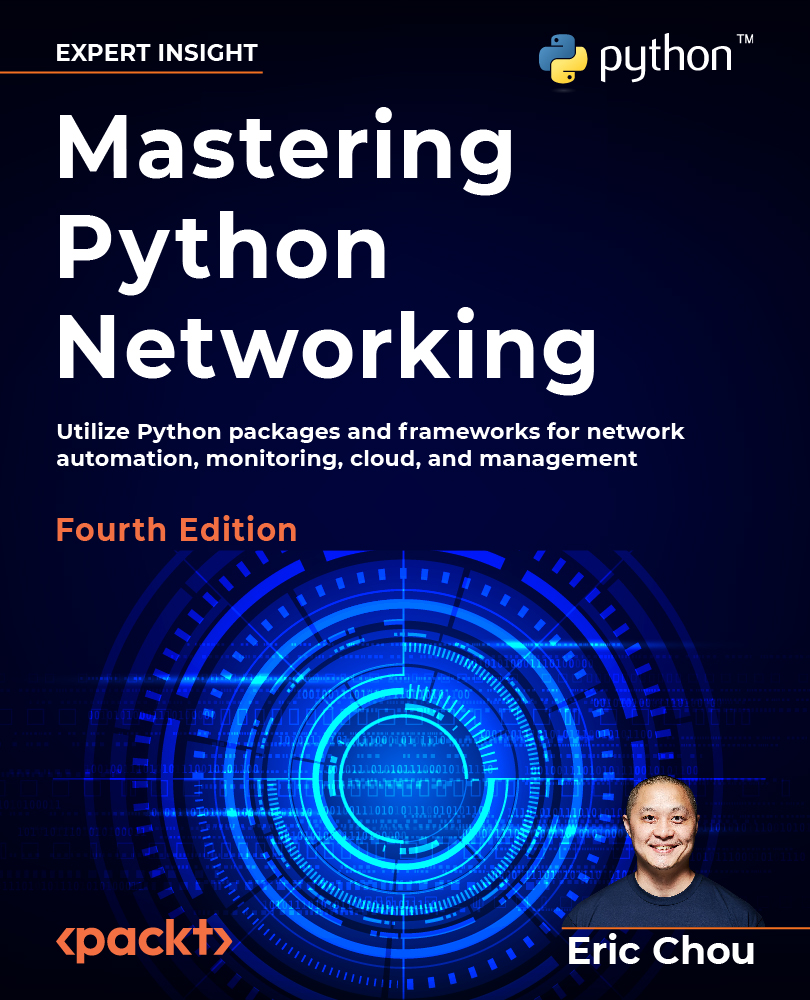Join our book community on Discord
https://packt.link/PyNetCommunity

In Chapter 7, Network Monitoring with Python – Part 1, and Chapter 8, Network Monitoring with Python Part – 2, we discussed the various ways to monitor a network. In the two chapters, we looked at two different approaches for network data collection: we can either retrieve data from network devices such as SNMP, or we can listen for the data sent by network devices using flow-based exports. After the data is collected, we will need to store the data in a database, then analyze the data to gain insights to decide what the data means. Most of the time, the analyzed results are displayed in a graph, whether a line graph, bar graph, or pie chart. We can use individual tools such as PySNMP, Matplotlib, and Pygal for each step, or we can leverage all-in-one tools such as Cacti or Ntop for monitoring. The tools introduced in those two chapters gave us basic monitoring and...































































